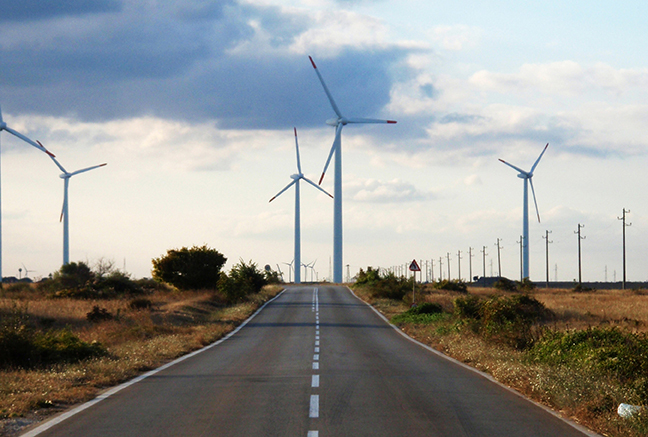ETC outlines pathway for the low-carbon energy transition
We Mean Business Coalition
The task of limiting global warming to well below 2°C, while continuing to grow the global economy and provide affordable, reliable, clean energy for all is achievable.
That’s one of the key findings of the new report from the Energy Transitions Commision (ETC) – “Better energy, Greater prosperity”.
However, the speed and scale of the transition has to radically increase in order to achieve these bold aims.
The ETC, which brings together expertise from the energy and climate communities – including investors, energy company executives and academics – argues that it is possible to cut carbon emissions from 36 Gt today to 20 Gt per annum by 2040, while transitioning to an energy system that’s provided almost solely by renewables.
This could also simultaneously ensure universal access to 80-100 GJ of affordable, reliable, clean energy – the threshold required for an acceptable standard of living, according to the ETC.
“We are ambitious but realistic. Despite the scale of the challenges facing us, we firmly believe the required transition is technically and economically achievable if immediate action is taken,” says Adair Turner, Chair of the ETC.
In the report, the ETC details four interdependent pathways which together have the power to create the transition to the low-carbon economy.
1.Clean electrification that’s cost competitive
Half of the emissions reductions needed by 2040, compared to a business-as-usual scenario, could come from clean electrification, the ETC finds. With the appropriate policies, it will possible within 15 years to build power systems that integrate up to 80-90% variable renewables and can deliver electricity at an all-in cost of less than $70 per MWh. This is likely to be competitive with fossil fuels based power generation, according to the report.
This shift is a reflection of the dramatic reductions in the cost of renewables and batteries being achieved now and in the future. Falling costs mean that clean electricity can be utilized ever more widely, by substituting fossil fuels for clean electricity in cars and heating.
2. Decarbonization of ‘hard-to-electrify’ sectors
Once the benefits of clean electrification are exhausted, there is a pressing need to cut carbon emissions from activities that cannot be electrified cost-effectively in transport and industry, the ETC stresses. But the technologies to do that – including bioenergy, hydrogen, and the multiple forms of carbon capture and sequestration – are not yet achieving the cost reductions and scale deployment seen in renewables and batteries. Governments and companies need to make significant R&D and initial deployment investments to ensure that these technologies become cost effective, according to the report.
3. An energy productivity revolution
Energy productivity improvements could deliver a third of required emissions reductions by 2040, but this would demand greatly accelerated energy efficiency progress across the buildings, transport and industry sectors.
It will also require structural changes in the economy to deliver more economic growth with less energy-intensive goods and services, the ETC finds.
4. Optimization of remaining fossil fuels
These transitions would result in a 30% decrease in fossil fuels use by 2040, but fossil fuels would still represent about 50% of final energy demand according to the ETC.
Meeting climate objectives therefore also requires a ramp-up in all forms of carbon capture and sequestration, including conversion into products, underground storage and natural carbon sinks. Increased use of gas must only occur if strong action is taken to eliminate methane leakage, the ETC adds.

